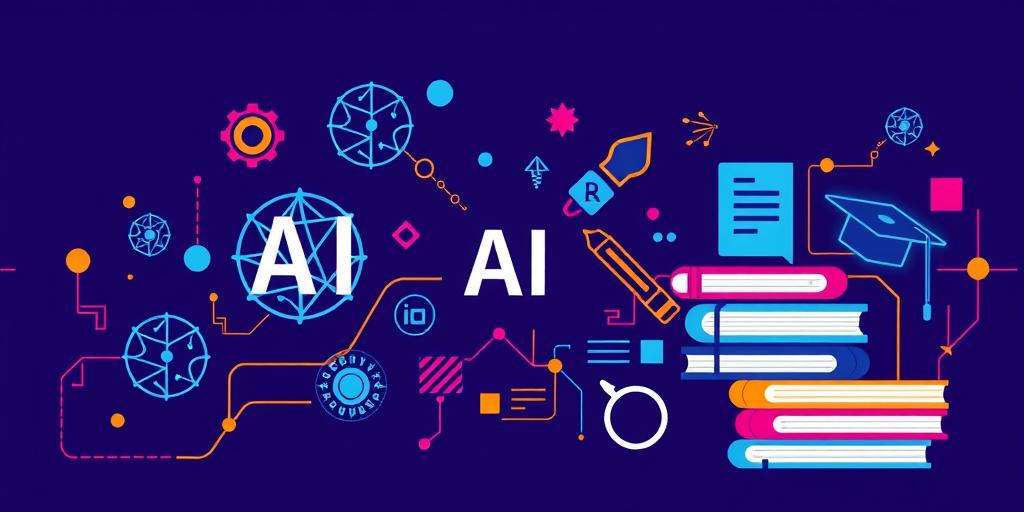The Rise of AI in Education: Opportunities and Challenges
Artificial intelligence (AI) is rapidly transforming various sectors, and education is no exception. AI's potential to personalize learning, automate administrative tasks, and provide valuable insights is garnering significant attention. However, the integration of AI in education also presents unique challenges that need careful consideration.
Opportunities in AI-Driven Education
- Personalized Learning: AI algorithms can analyze student data to understand individual learning styles, paces, and preferences. This enables the creation of customized learning paths, ensuring that each student receives the support and challenges they need to succeed. Adaptive learning platforms, powered by AI, adjust the difficulty level of content based on student performance, providing a tailored educational experience. For example, platforms can identify areas where a student struggles and provide targeted interventions, improving learning outcomes.
- Automated Administrative Tasks: Educators spend a significant amount of time on administrative tasks such as grading, scheduling, and communication. AI can automate many of these tasks, freeing up educators to focus on teaching and student interaction. AI-powered grading systems can provide quick and consistent feedback on assignments, while AI chatbots can handle routine student inquiries. The automation of administrative tasks can lead to increased efficiency and reduced workload for educators.
- Intelligent Tutoring Systems: AI can power intelligent tutoring systems that provide students with personalized instruction and support. These systems can adapt to student needs in real-time, offering targeted feedback and guidance. AI tutors can cover a wide range of subjects and can be available 24/7, providing students with access to learning resources whenever they need them. The use of AI tutors can enhance student understanding and improve academic performance.
- Enhanced Accessibility: AI can make education more accessible to students with disabilities. AI-powered tools can provide real-time transcription, translation, and text-to-speech capabilities, ensuring that all students have equal access to educational content. AI can also personalize learning experiences for students with special needs, providing customized support and interventions. The use of AI can create a more inclusive and equitable learning environment.
- Data-Driven Insights: AI can analyze large datasets to identify trends and patterns in student performance, providing educators with valuable insights into the effectiveness of teaching strategies and curriculum design. These insights can inform evidence-based decision-making, leading to improved educational outcomes. AI can also help identify at-risk students and provide targeted interventions to prevent academic failure. The use of AI can transform education from a one-size-fits-all approach to a data-driven, personalized experience.
Challenges of Implementing AI in Education
- Data Privacy and Security: The use of AI in education involves collecting and analyzing vast amounts of student data, raising concerns about data privacy and security. It is crucial to implement robust data protection measures to safeguard student information and comply with privacy regulations. Educators and policymakers need to establish clear guidelines for data collection, storage, and use to ensure that student data is handled responsibly.
- Bias and Fairness: AI algorithms are trained on data, and if the data is biased, the algorithms can perpetuate and amplify those biases. This can lead to unfair or discriminatory outcomes for certain groups of students. It is essential to carefully evaluate AI algorithms for bias and take steps to mitigate any potential biases. Educators need to be aware of the limitations of AI and use it in conjunction with human judgment to ensure fairness and equity.
- Lack of Human Interaction: While AI can enhance certain aspects of education, it cannot replace the human element of teaching and learning. Human interaction is essential for developing social-emotional skills, fostering critical thinking, and building relationships. It is important to strike a balance between AI-driven learning and human interaction to ensure that students receive a well-rounded education.
- Cost and Infrastructure: Implementing AI in education can be expensive, requiring investments in hardware, software, and training. Many schools and educational institutions may lack the resources and infrastructure needed to fully integrate AI into their programs. It is important to address these challenges by providing funding and support to help schools adopt AI technologies.
- Teacher Training and Professional Development: Educators need to be trained on how to use AI tools effectively and how to integrate them into their teaching practices. Professional development programs can help educators develop the skills and knowledge they need to leverage AI to enhance student learning. It is also important to provide ongoing support and resources to educators as AI technologies continue to evolve.
Conclusion
AI has the potential to revolutionize education, offering personalized learning experiences, automating administrative tasks, and providing valuable insights. However, it is essential to address the challenges associated with data privacy, bias, and the lack of human interaction. By carefully considering these challenges and implementing appropriate safeguards, we can harness the power of AI to create a more effective, equitable, and engaging educational system. The key is to strike a balance between AI-driven learning and human interaction, ensuring that students receive a well-rounded education that prepares them for the future.




